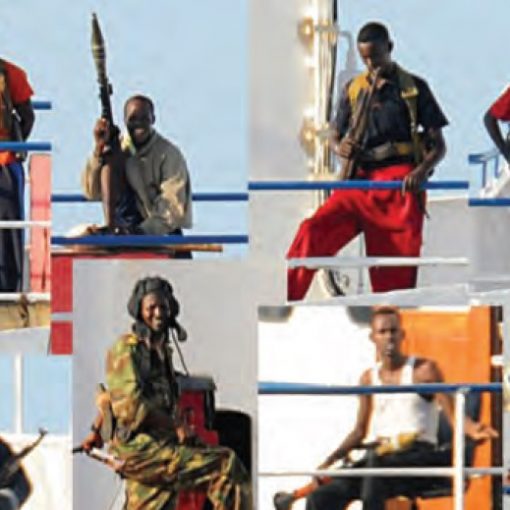* Moderator’s Note: This article was originally published in the Halifax Chronicle-Herald on 03 December 2011. It is reprinted here with the permission of the author.
Eight of Canada’s provinces and all our Northern territories have oceanic shorelines. The 1,287-kilometre St. Lawrence Seaway and the navigable passages through the Great Lakes extend from the Atlantic to Thunder Bay on the Canadian side and Duluth, Minn., on the U.S. side — about 3,800 km — almost halfway through the country. While no surprise to Nova Scotians, many Canadians do not understand that we are a maritime nation, and that this can bring ship-borne threats.
The marine industry is an essential lifeline for so many of our daily needs. Annually, it generates $10 billion in economic activity and $117 billion in international trade. The industry is responsible for 100,000 jobs that manage and move 97 per cent of all non-U.S. international trade — 456 million tonnes of cargo annually. Globally, about 90 per cent of world trade is carried by the international shipping industry.
But seas that carry commerce also can bring security challenges to Canada. British Columbia-based public policy analyst Tim Lynch outlines several threats that come from our growing reliance on maritime trade and commerce:
- Human smuggling and trafficking: profits of $7 billion to $12 billion US per year, and earnings of $32 billion annually from the sexual servitude of women and children.
- Energy security: to protect Canada from catastrophes like the Exxon Valdez and British Petroleum oil spills.
- Port security: Eighty per cent of world trade passes through the world’s approximately 4,000 ports, making them potential targets for illegal activity and terrorism.
- Territorial claims: Senator Bill Romkey (Labrador) writes that Canada’s rights to the Northwest Passage are challenged by nations like America, Russia, Denmark, Norway and China.
Terrorism has a maritime component. An article in the respected journal The Economist (Oct. 11, 2002) disclosed that an Egyptian, suspected of being an al-Qaida terrorist, was discovered hiding in a sea container in the Italian port of Gioia Tauro. Had he not been discovered, his voyage would have taken him to Halifax.
And we can add to this list:
- Drug smuggling: The UN estimates the global illegal drug trade was at $321.6 billion US in 2003, against a global GDP of $36 trillion US.
- Illegal migration: The arrival in B.C. of 76 Sri Lankan Tamil men aboard MV Ocean Lady in October 2009 underscored the extent to which desperate people will go to improve their lives, and the extent to which unscrupulous people will exploit them for profit. Illegal migrants have landed on both coasts.
- Maritime piracy: Events off the Somali coast have raised the profile of piracy, but there have been reports of piracy in the Caribbean as well.
Rather than enjoying the safe and peaceful world we expected at the end of the Cold War, the world has become far more sinister — a lawless maritime Wild West on a global scale.
Potential threats to Canada’s maritime security are monitored by three Marine Security Operations Centres (MSOCs). The East and West coasts’ MSOCs are located in navy headquarters buildings. The third MSOC is the Great Lakes and St. Lawrence Seaway centre located in Ontario’s Niagara region. They are ‘whole of government’ operations, with partners working collaboratively to develop a comprehensive maritime domain picture.
The establishment of these MSOCs is a result of the federal government’s national security policy entitled Securing An Open Society, tabled in Parliament on April 27, 2004. The policy outlined the broad scope of security, intelligence and public safety measures designed to protect Canadians against current and future security threats, and operates with five core departmental partners:
- Canada Border Services Agency;
- Department of Fisheries and Oceans and Canadian Coast Guard;
- Department of National Defence;
- Royal Canadian Mounted Police; and
- Transport Canada.
The coastal MSOCs began operations in September 2004. Their objectives are to better track vessels operating in Canadian waters; increase surveillance; protect marine infrastructure; improve domestic and international co-operation; and provide warning of maritime threats to Canada.
The MSOCs take naval and marine intelligence, and operations information collected by the partner agencies and departments, and use this to develop an integrated awareness of our national maritime situation and conduct contingency planning for decision-makers.
Canadian security agencies, including the Forces, RCMP, the Coast Guard, Canadian Border Services Agency and provincial and municipal police, can then resolve any marine security threats that could adversely affect the safety, security, environment or economy of Canada.


